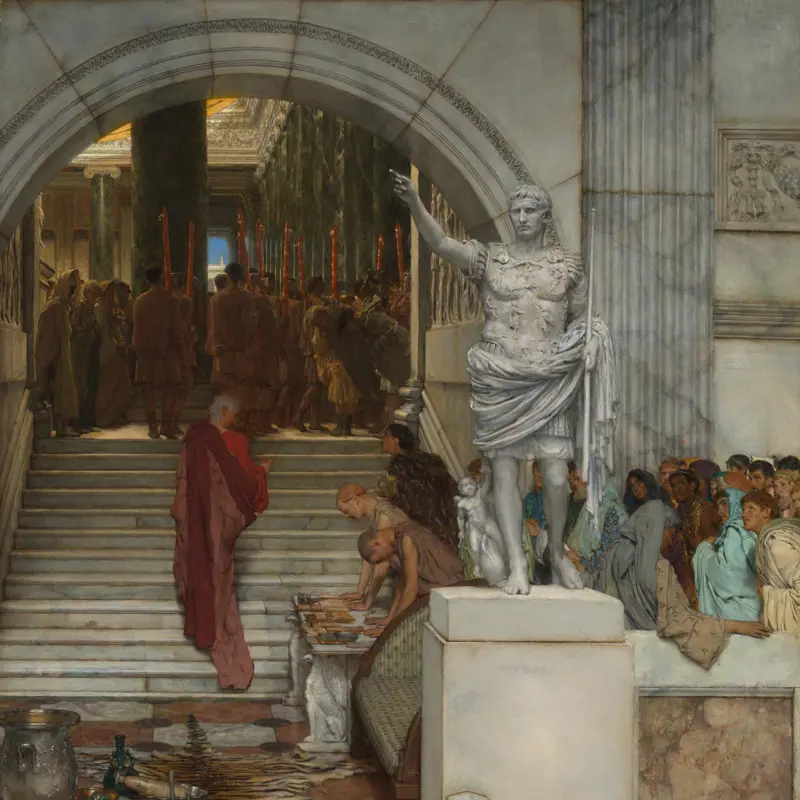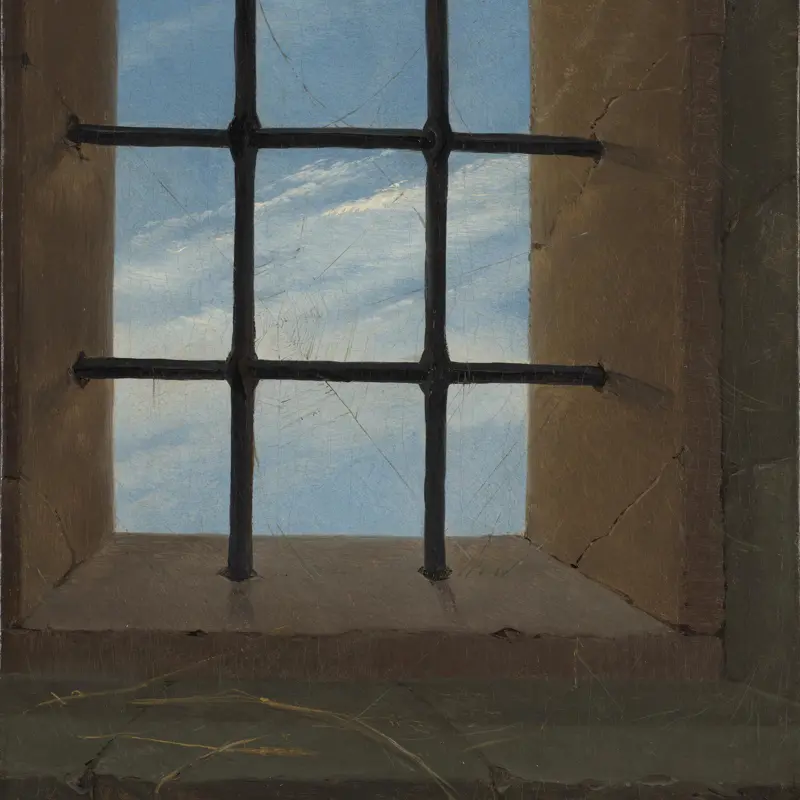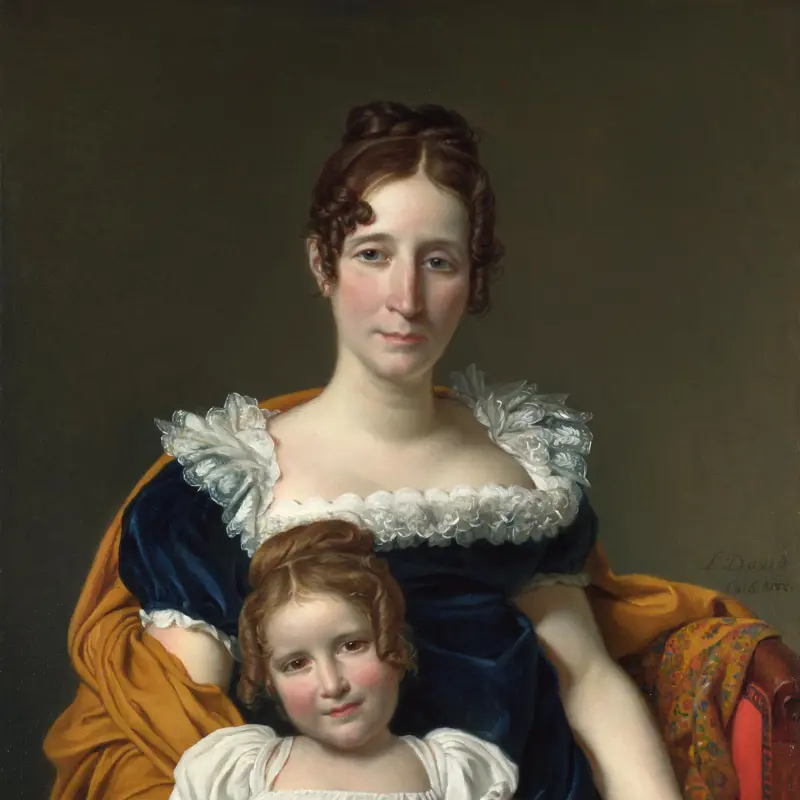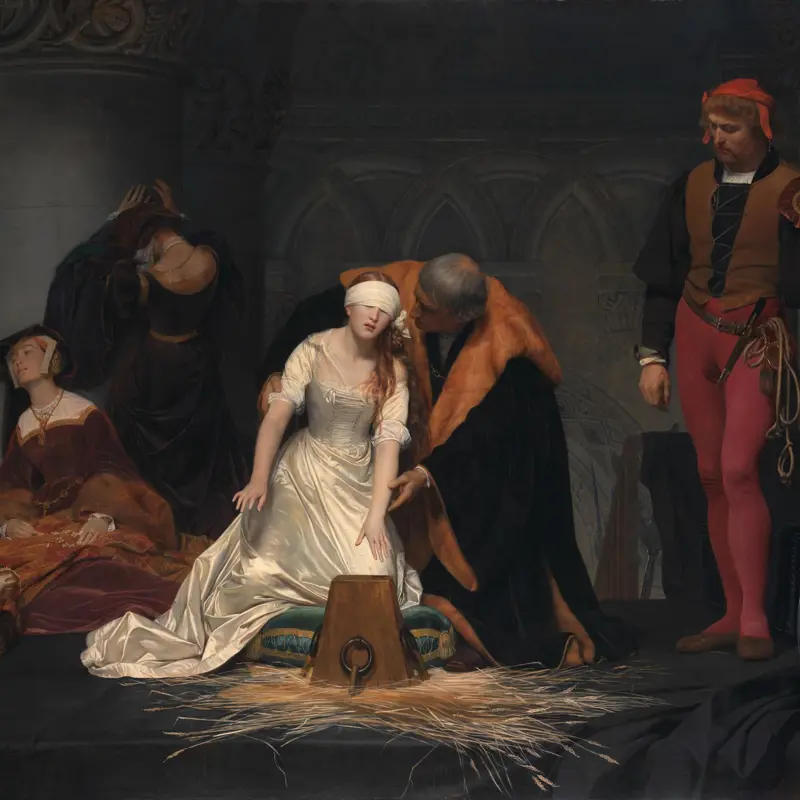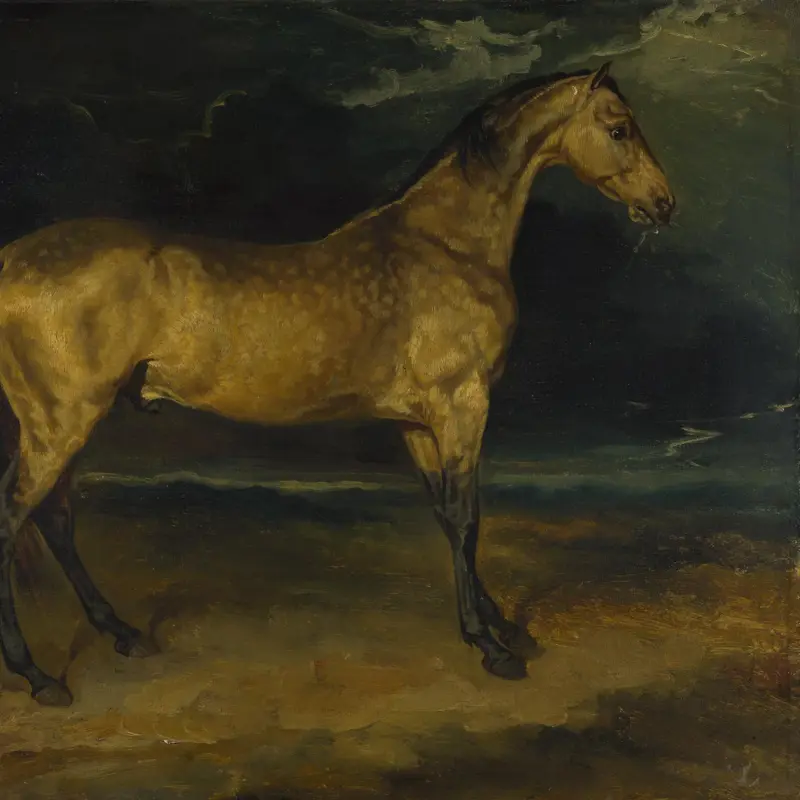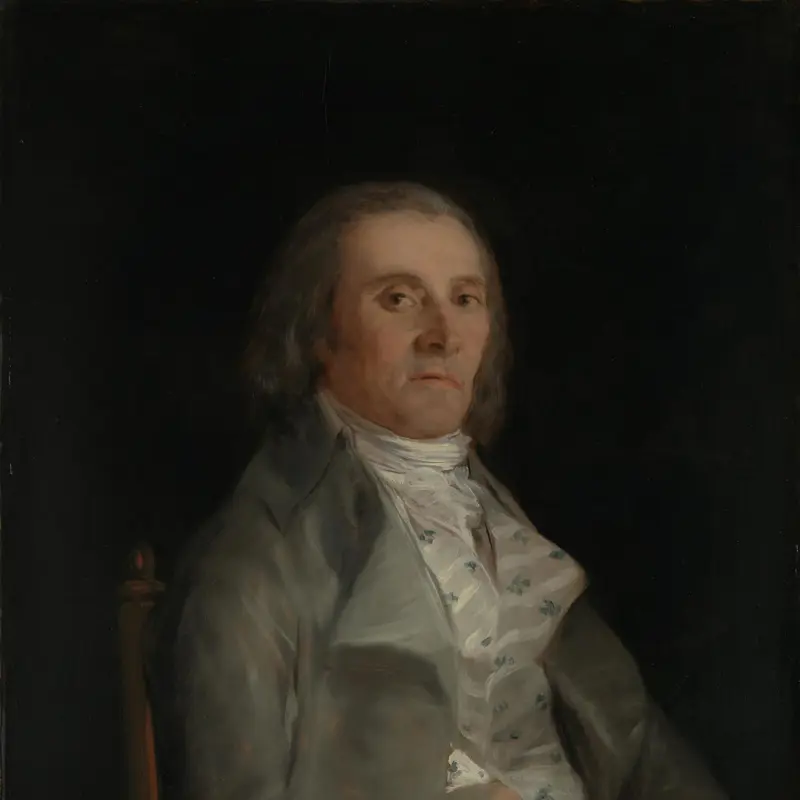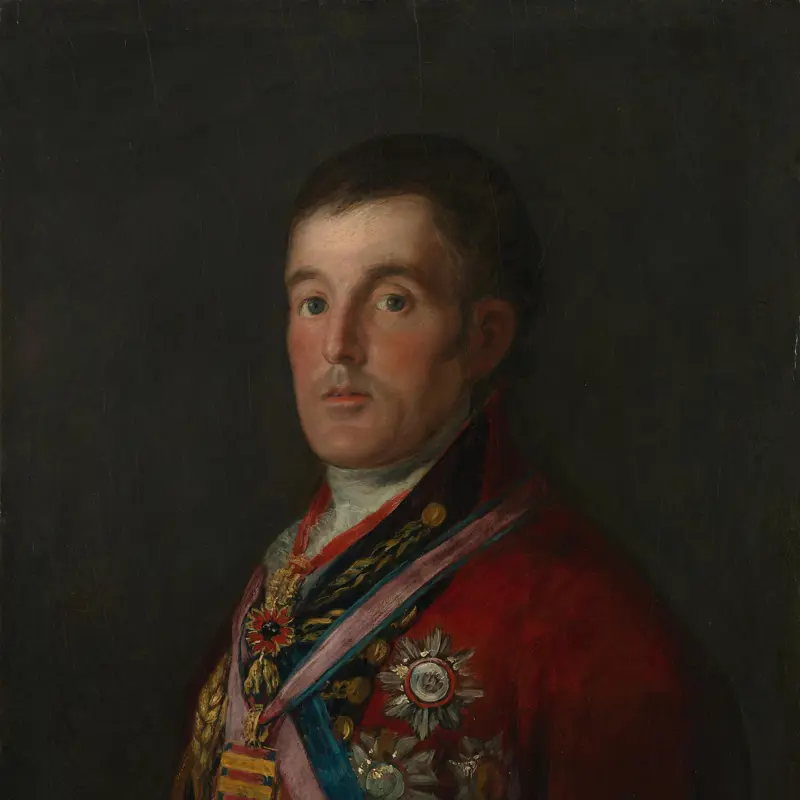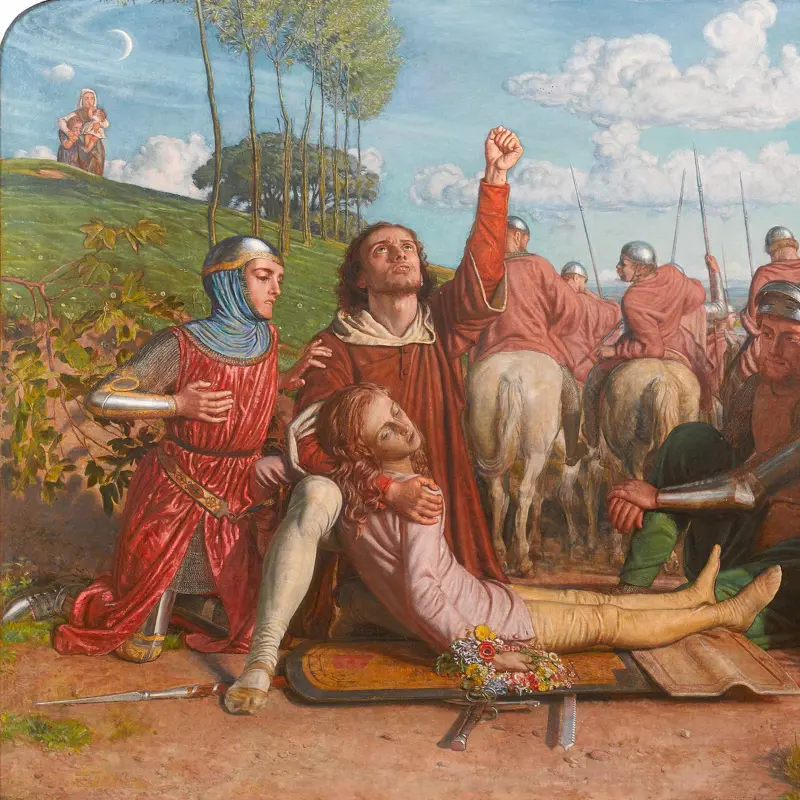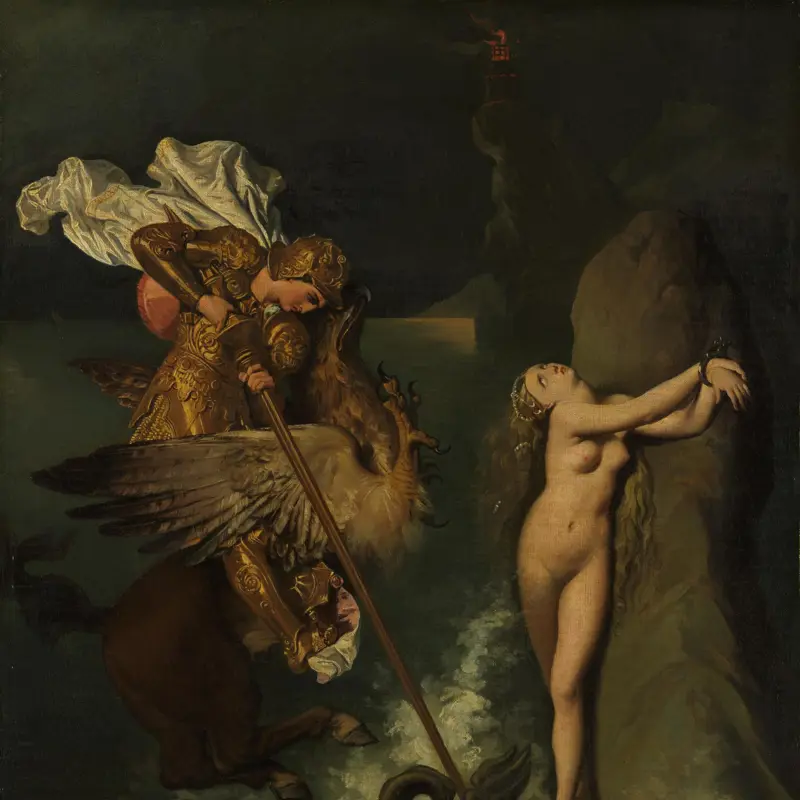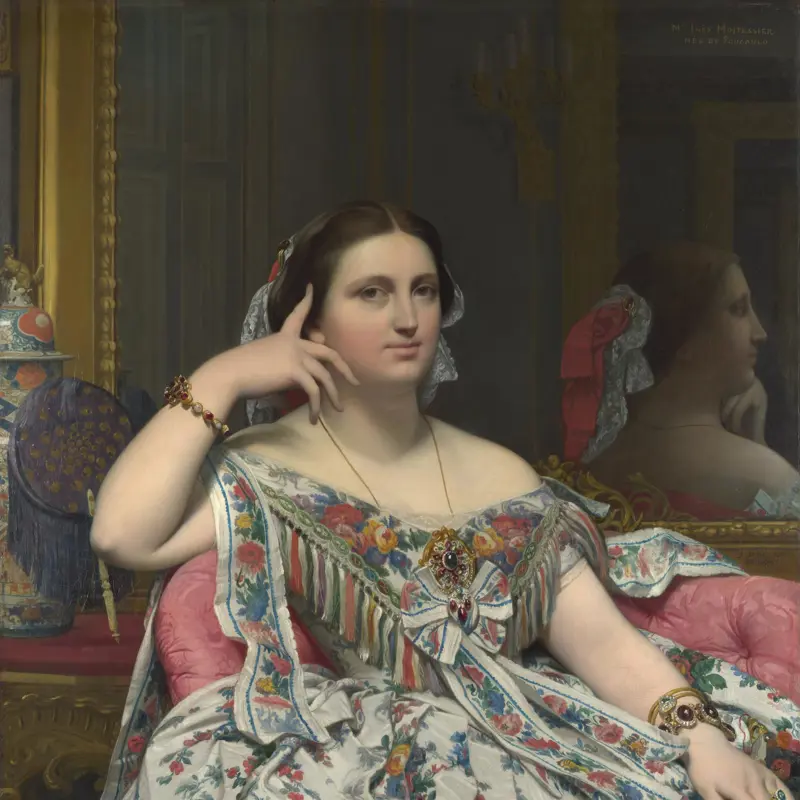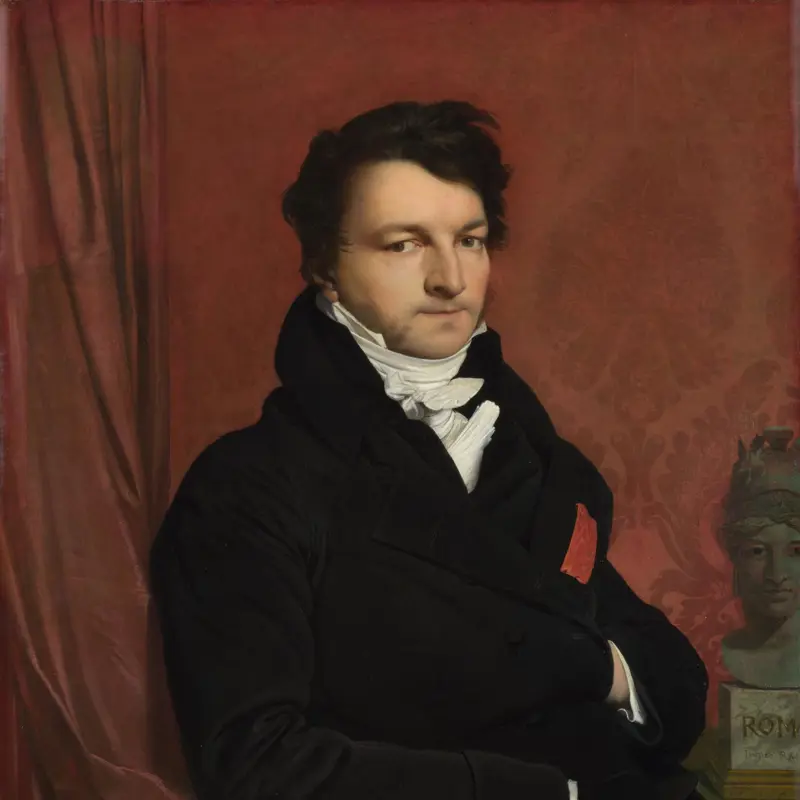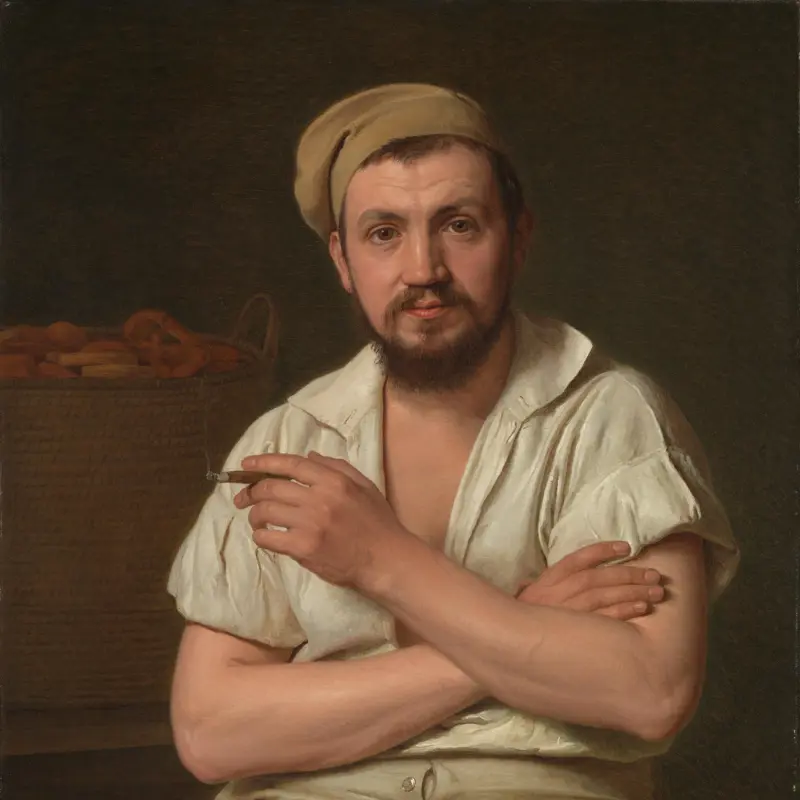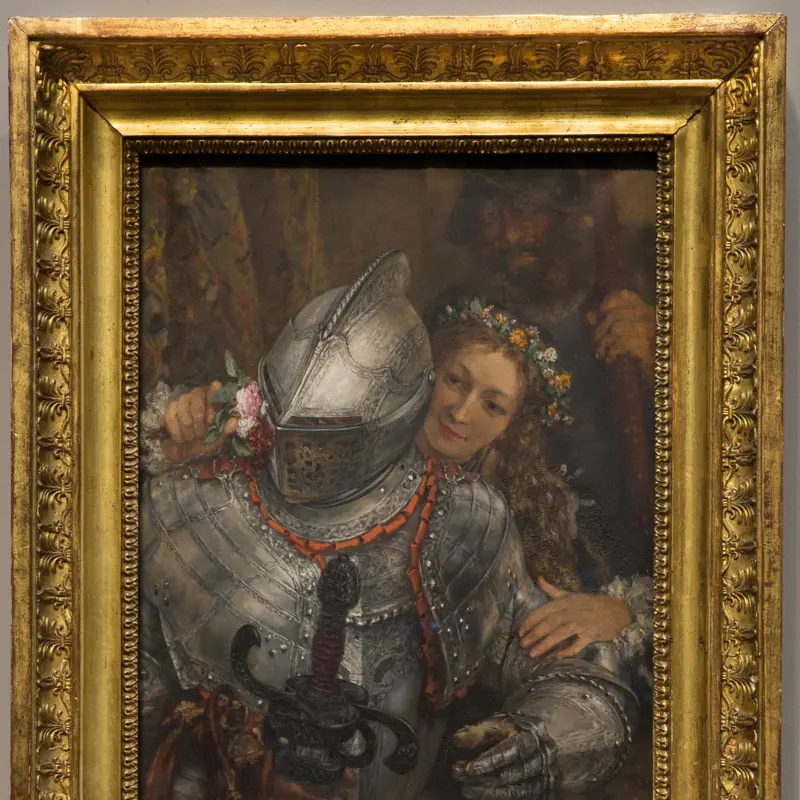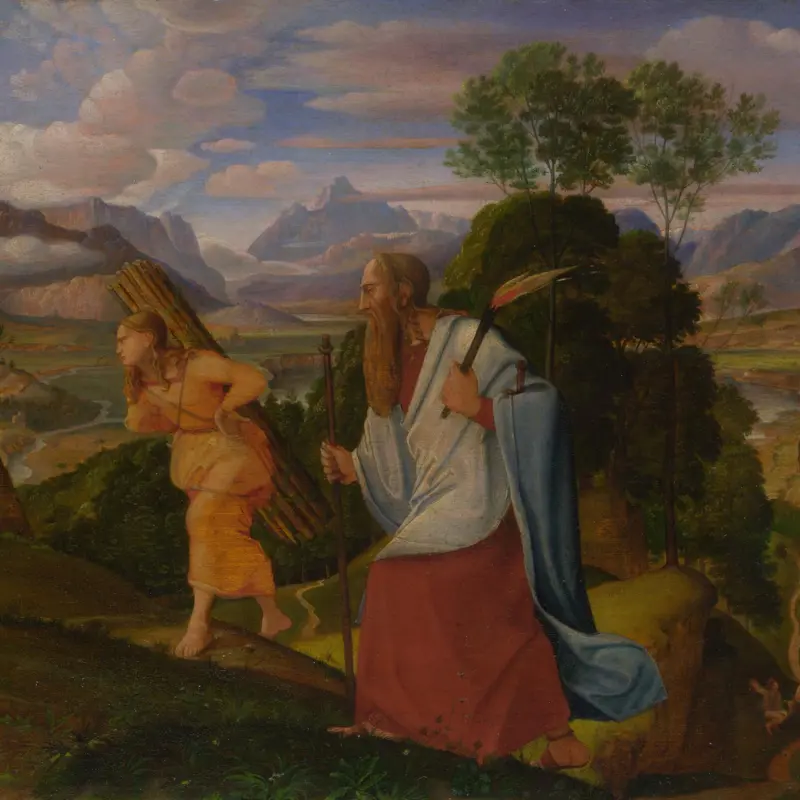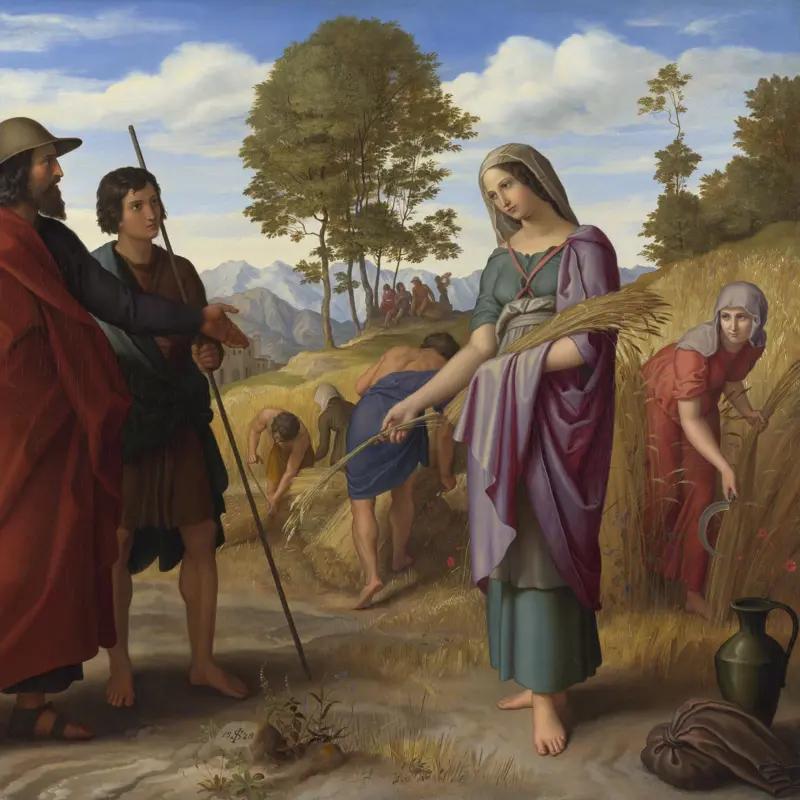The teaching of official art schools dominated European painting during the first half of the 19th century. Drawing the human body was central to an artist’s training. Students worked first from plaster casts of statues and then from the life model. Intense study of the human figure was required to create large-scale historical, mythological and religious compositions. These subjects were considered the highest form of painting due to their ability to convey moral ideas. Such works were admired at official exhibitions like the Paris Salon or at the Royal Academy in London.
Academic pictures were often painted in a highly finished and polished style, as in works by Jean-Auguste-Dominique Ingres and Paul Delaroche. Paintings by Eugène Delacroix and Théodore Géricault, by contrast, are characterised by a freedom of brushwork and dramatic colour which convey feeling and emotion – a style known as Romanticism.
Portraiture grew in popularity and standing during the 18th and 19th centuries. Along with the nobility, members of the professional classes increasingly commissioned portraits. For many artists these guaranteed a stable income and increased their fame.


